Gillian Blythe, Chief Executive, Water New Zealand.
More than 1000 delegates – water sector leaders, suppliers, consultants – spent two and a half days at the recent Water New Zealand Conference & Expo 2022 at Te Pae in Ōtautahi Christchurch discussing how to meet challenges facing Aotearoa New Zealand’s three waters sector.
We’re entering an era of change, not least in terms of three waters reform, but also changing climate, iwi/Maori engagement, workforce capability and capacity. It is particularly important for anyone working or doing business in the Three Waters sector engages with the reform process to ensure a good understanding about the size of the infrastructure deficit and potential opportunities available to address it.
One of the key concepts underpinning the future of water is Te Mana o te Wai. This represents a big shift in our relationship with water. Te Mana o te Wai essentially puts the health and wellbeing of the water first. It is about treating it as not just a resource but as the vital taonga.
Te Mana o te Wai first emerged as part of the National Policy Statement on Freshwater Management (NPS-FM) and is now embedded across the wider water sector including within the new regulator, Taumata Arowai and water suppliers.
Also vitally important for consultants within the water sector will be ensuring a good understanding of issues around the workforce and technical procurement.
We are going to need to develop a larger and more skilled workforce. The sheer scale of the workforce required to address the $125bn – $185bn infrastructure deficit will be a significant challenge. The emergence of larger entities that can leverage scale will have an obvious impact on procurement and there is a lot of discussion underway, and still to be had, around these issues.
Underpinning all this is the need for a long term vision. We need a discussion and shared vision about where we’re going and how we’re going to get there. What should the three waters sector look like in 2050? What is required to ensure a safe, efficient and resilient three waters for future generations?
That’s why Water New Zealand is very keen to hear from both our members and the wider sector. This is a vitally important discussion so we would welcome your input. You can go to http://www.Slido.com #2730859 to take part.
Current situation around Three Waters
For many years, it has been very clear to the people who work in the Three Waters Sector that we have a major infrastructure problem because there has not been enough investment in water infrastructure.
The facts are disturbing. Currently, 20 percent of the water in the network is lost through leaks before it reaches our taps and in one or two regions that loss spirals to more than 50 percent of the water loss in the network.
Water New Zealand’s annual benchmarking tool on the state of the industry, the National Performance Review[1] found that in 2020/21 there were 1,159 wet weather wastewater network overflows and 355 overflows from combined stormwater and wastewater networks in that year that we know about.
Another report, by GHD and Boffa Miskell,[2] found that only 27 percent of 321 council owned and operated Wastewater Treatment plants were fully compliant with the consents.
Almost one in five people in Aotearoa New Zealand are supplied with drinking water that does not fully meet drinking water standards.[3] That means the water is not demonstrably safe to drink. A further 18 percent don’t even know what their water supply is like because their water suppliers have not been required to report or they receive drinking water from unregistered or domestic self supplies.
There has also been growing concern about the state of our rivers and beaches. It’s not uncommon for beaches and waterways to be closed for swimming after heavy rain events because of sewage overflows.
The state of our water has been no surprise to many. Concerns have been documented for decades.
Back in 2000, the Parliamentary Commissioner for the Environment, Dr Morgan Williams, in his report, Ageing pipes and murky waters: Urban water system issues for the 21st century[4]said that a major redesign of our water supply system was needed because our current system had its origins in the 19th century built on the assumption that we had abundant water resources and the ability to treat and dispose of any amount of polluted waters.
Following the Havelock North contamination event in which at least four people died and 5500 people were ill with campylobacter, the subsequent inquiry[5] found “widespread systemic failure” amongst local authorities and the Ministry of Health.
Then in 2020, a report from the Office of the Auditor General, Reflecting on our work about water management,[6]found “…public organisations trying to do the right thing while working with the resources they have, within the limits of their own roles and responsibilities, and in a context of increasing complexity and uncertainty”.
The report went on to say they “…did not see clear agreement across central and local government about the vision for New Zealand’s water resources – the issues, objectives, and priorities for water management over the long term that all organisations, public and private, should seek to address.
“The lack of clarity about what the issues are, how to address them, and who will deliver programmes of work increases the risk that public organisations are not directing their efforts towards the same outcomes. It also means that some organisations might carry out work that conflicts with or duplicates that of other organisations, and that investment and policy decisions are not targeted to address the greatest risks or achieve the greatest benefits.”
The report also spoke about the need for better information about the condition and performance of assets, including water, wastewater, and stormwater assets. Because of gaps in this information, those responsible for managing the assets that deliver water-related services are often limited in their ability to make well-informed decisions. Lack of information also limits the ability to have informed conversations with communities about the risks they are willing to accept, such as the level of flood risk they might be exposed to.
The big looming bill
If we haven’t been keeping up to date with our current infrastructure needs, climate change and population growth will place even bigger challenges on our system.
It’s been estimated we’ll need to invest another $120-185 billion[7] over the next 30 years to meet current and future demands. Depending on your base, this represents at least a doubling, if not a trebling, of investment costs every year for the next 30 years.
We know we’re going to see more extreme weather events increasing flooding and damage and failure of infrastructure as well as more droughts and sea level and groundwater table rise.
We’re going to see a deterioration in water quality due to changes in water flows and from increased stormwater.
To meet our future demands, we’re going to need a big increase in the level and skills of our water workforce. Analysis by Deloitte[8] in 2021 estimated the workforce will need to grow by 6000-9000 to deliver the required investment. A further Deloitte report[9] in 2022 provides an indication of the number of different water roles that may be required to address Council Long Term Plans.
The need to use water more efficiently
Water wastage is inefficient, costly and impacts on our carbon emissions.
Losing 20 percent of our water through our broken pipes leads to the development and building of more carbon intensive source water infrastructure – such as dams and reservoirs.
It also adds to treatment and wastewater costs.
New Zealanders need to be more aware of the water they use and its cost. Knowing the cost of your water use helps make decisions around efficiency. For instance, a recent smart meter residential use study by BRANZ/Auckland University[10] found that non metered and volumetrically charged households used on average 682 litres of water per day while comparable households with meters and volumetric charging used 424 litres a day. Clearly paying for the amount of water you use is a great incentive to fix that leaky tap.
Importance of scale
If we’re going to become more efficient, we need to leverage scale. Ensuring our utilities have the funding and expertise to adopt new technologies will help towards achieving our net zero emissions goal. New developments such as extracting energy from wastewater treatment and other emerging technologies will help reduce carbon emissions.
That’s why we need organisations with the size and scale to employ highly skilled teams that can look across the sector and adopt international best practice. This includes engineers, scientists, data specialists, modellers, matauranga Māori practitioners as well as people on the ground such as treatment and wastewater plant operators. The list goes on.
Looking ahead towards a resilient future
We need to continue to embed a visionary future in the form of Te Mana o te Wai that acknowledges and supports the value of water – not just as a resource, but as the vital taonga it is. The principles of Te Mana o te Wai recognise the vital importance of clean, healthy water for maintaining the health of our waterbodies, freshwater ecosystems and the communities that rely on them.
Te Mana o te Wai is already embodied in the National Policy Statement on Freshwater Management 2020 (NPS-FM)[11] and also applies to the new regulator, Taumata Arowai and water suppliers. In essence it places the health of and well being of water bodies and ecosystems first, then the health needs of the people, and then third on the hierarchy of obligations is the ability of people and communities to provide their social, economic and cultural well being now and into the future.
Ka ora te wai, ka ora te whenua, ka ora ngā tāngata. ‘If the water is healthy, the land is healthy, the people are healthy’.
By protecting the health and wellbeing of our water, we in turn protect the health and wellbeing of our people and surrounding environments.
[1] https://www.waternz.org.nz/NationalPerformanceReview
[3] https://www.taumataarowai.govt.nz/about/water-services-insights-and-performance/
[5] https://www.dia.govt.nz/Government-Inquiry-into-Havelock-North-Drinking-Water
[6] https://oag.parliament.nz/2020/water-management
[10] https://www.waternz.org.nz/Resources/Article?Action=View&Article_id=2292
[11] https://environment.govt.nz/publications/national-policy-statement-for-freshwater-management-2020/
